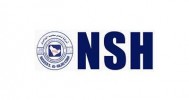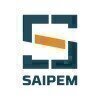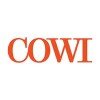Filter interviews by
Burns & McDonnell Design Engineer Interview Questions and Answers
Burns & McDonnell Design Engineer Interview Experiences
1 interview found

(3 Questions)
- Q1. What is orifice std and types of taps
- Ans.
Orifice std refers to standard orifice sizes used in engineering. Types of taps include flange taps, corner taps, and D and D/2 taps.
Orifice std refers to standard sizes of orifices used in flow measurement
Types of taps include flange taps, corner taps, and D and D/2 taps
Flange taps are used for large pipes, corner taps for small pipes, and D and D/2 taps for general applications
- Q2. What is pressure gauge operating range
- Ans.
Pressure gauge operating range refers to the minimum and maximum pressure values that the gauge can accurately measure.
Pressure gauge operating range is typically specified by the manufacturer.
It is important to ensure that the pressure being measured falls within the gauge's operating range to ensure accurate readings.
For example, a pressure gauge with an operating range of 0-100 psi should not be used to measure pres
- Q3. What is straight length requirements for orifice flow element
- Ans.
Straight length requirements for orifice flow element ensure accurate measurement by allowing flow to stabilize before reaching the element.
Straight length requirements typically range from 10 to 44 pipe diameters upstream and 5 to 22 pipe diameters downstream of the orifice.
These requirements help prevent flow disturbances and ensure accurate measurement of flow rate.
For example, if the pipe diameter is 4 inches, the ...
(3 Questions)
- Q1. Salary expectations and current ctc
- Q2. Describe about yourself and other information
- Q3. Why we should hire you and other similar questions.
Interview Preparation Tips
Design Engineer Jobs at Burns & McDonnell
Top trending discussions






Interview questions from similar companies

I applied via Recruitment Consultant and was interviewed in Feb 2020. There were 5 interview rounds.
Interview Questionnaire
3 Questions
- Q1. 1) About my work experience and the points updated in my cv.
- Q2. 2) Asked me to draw pump suction and discharge and how would you extract MTO from that drawing
- Q3. Few other questions related to the tool sp3d and pdms
Interview Preparation Tips

Piping Engineer Interview Questions & Answers
Nasser S. Al Hajri Corporationposted on 8 Aug 2021
Interview Questionnaire
1 Question
- Q1. Dear Friends I am sharing some questions regarding Piping Engineer interview. 1. Piping drawing template. 2. Piping support and it's type. 3. ASME codes of Materials. And some questions regarding your old ...

Piping Engineer Interview Questions & Answers
Nasser S. Al Hajri Corporationposted on 21 Oct 2023

(1 Question)
- Q1. About Piping construction process, drawings and Quality control.
(1 Question)
- Q1. About salary and when can I join

I applied via LinkedIn and was interviewed in Apr 2023. There were 2 interview rounds.

(2 Questions)
- Q1. What type of Pressure Tests are conducted on valves?
- Ans.
Various pressure tests are conducted on valves including hydrostatic test, pneumatic test, and cryogenic test.
Hydrostatic test is conducted by filling the valve with water and pressurizing it to a specified pressure to check for leaks.
Pneumatic test involves using air or nitrogen to pressurize the valve and check for leaks or defects.
Cryogenic test is performed at low temperatures to ensure the valve can withstand extr...
- Q2. What are some of the most important safety considerations you make when designing piping systems?
- Ans.
Safety considerations in designing piping systems are crucial for preventing accidents and ensuring the integrity of the system.
Ensuring proper material selection to withstand the intended pressure and temperature conditions
Implementing proper support and restraint systems to prevent excessive stress and vibration
Incorporating adequate access points for maintenance and inspection
Following relevant codes and standards s...
Interview Preparation Tips

I applied via Naukri.com and was interviewed before Nov 2019. There was 1 interview round.
Interview Questionnaire
4 Questions
- Q1. Basics related to piperack design
- Q2. Design parameters for steel structure
- Ans.
Design parameters for steel structure
Load capacity and distribution
Material strength and durability
Environmental factors such as wind and seismic activity
Connection details and joint design
Fire resistance and protection measures
- Q3. Number of years exposure to staad
- Ans.
I have 5 years of exposure to STAAD software.
I have used STAAD for various structural analysis and design projects.
I am proficient in using STAAD for modeling, analysis, and design of steel and concrete structures.
I have experience in using STAAD for seismic analysis and design of structures.
I have also used STAAD for foundation design and analysis.
I keep myself updated with the latest versions and features of STAAD so
- Q4. Grating design and deflection limits
Interview Preparation Tips

Interview Questionnaire
4 Questions
- Q1. Asked about GATE rank, UG entrance Exam rank( AIEEE Rank)
- Q2. Explain pushover analysis
- Ans.
Pushover analysis is a nonlinear static analysis method used to evaluate the seismic performance of structures.
Pushover analysis involves applying a series of lateral loads to a structure and observing its response.
It is used to determine the capacity of a structure to resist seismic forces and identify potential failure modes.
The analysis is based on the assumption that the structure will undergo inelastic behavior du...
- Q3. Draw bending Moment & Shear force of standard portal frame
- Ans.
To draw bending moment and shear force of a standard portal frame, one needs to analyze the frame's geometry and loading conditions.
Identify the geometry of the portal frame
Determine the loading conditions on the frame
Calculate the reactions at the supports
Draw the shear force and bending moment diagrams
Label the diagrams with values and units
- Q4. Draw Influence line diagram
- Ans.
An influence line diagram shows the variation of a response function at a specific point due to a unit load moving along the structure.
Influence lines are used to determine the maximum or minimum response of a structure.
They are commonly used in civil engineering for designing bridges and other structures.
The diagram is drawn by considering the structure as a series of beams and calculating the deflection or reaction a...
Interview Preparation Tips
Experience: Really i was just nervous but i could managed to answer them.
Tips: Note the following people have more chance
1. 9 pointer from structural engg.
2. Structural Engg. students working on bridge ( pre-stressed concrete bridges preferred)
3. B Tech from reputed institute ( Like NIT)
4. Geotech students working on Plaxis .
5. Try to explain your resume properly
General Tips: Brush up your technical skills,be confident about your answer.
Skill Tips: Just be through with your technical skills.
Skills: Your technical knowledge
College Name: IIT ROORKEE
Motivation: i always wanted to be placed in this finally my dream came true.

I applied via Company Website and was interviewed before Jul 2023. There was 1 interview round.
(2 Questions)
- Q1. What is Truss member
- Ans.
A truss member is a structural component of a truss, which is a framework of beams used to support a roof or bridge.
Truss members are typically straight and connected at joints.
They can be made of various materials such as wood, steel, or aluminum.
Common types of truss members include chords, webs, and diagonals.
Truss members are designed to carry tension or compression forces efficiently.
Examples of truss members incl
- Q2. How to check tower load valudation
- Ans.
Tower load validation can be checked through structural analysis software and manual calculations.
Use structural analysis software to simulate different load conditions on the tower.
Calculate the expected load on the tower based on the design specifications and environmental factors.
Compare the simulated and calculated loads to ensure they are within the safe limits.
Perform on-site inspections and measurements to verif...

I applied via Naukri.com and was interviewed in Jun 2024. There were 2 interview rounds.
(2 Questions)
- Q1. Patch load on towers
- Ans.
Patch load on towers refers to the additional weight or load that is applied to a tower structure to strengthen or modify its capacity.
Patch load can be applied to towers to increase their capacity to withstand wind, seismic, or other loads.
Patch load can also be used to redistribute loads on a tower to prevent structural failures.
Examples of patch loads include adding steel plates or braces to a tower structure to inc...
- Q2. Epa calculation
(2 Questions)
- Q1. Work beyond shift time
- Q2. Codes on towers
- Ans.
Codes on towers refer to the specific design and construction standards that must be followed for safety and structural integrity.
Codes on towers are regulations set by organizations like ANSI/TIA and ASCE that dictate the design, construction, and maintenance of towers.
These codes cover aspects such as materials used, structural design, wind loading, and safety factors.
For example, ANSI/TIA-222-G specifies the require...

I applied via Walk-in and was interviewed before Sep 2022. There were 2 interview rounds.

(2 Questions)
- Q1. Which column takes more load short or Long Column
- Q2. What kind of pressures will impose on the water tank walls during seismic
Interview Preparation Tips
Burns & McDonnell Interview FAQs
Tell us how to improve this page.
Burns & McDonnell Interviews By Designations
- Burns & McDonnell Electrical Engineer Interview Questions
- Burns & McDonnell Structural Engineer Interview Questions
- Burns & McDonnell Instrument Engineer Interview Questions
- Burns & McDonnell Piping Engineer Interview Questions
- Burns & McDonnell Data Analyst Interview Questions
- Burns & McDonnell Graduate Engineer Trainee (Get) Interview Questions
- Burns & McDonnell Electrical Design Engineer Interview Questions
- Burns & McDonnell Analyst Interview Questions
- Show more
Interview Questions for Popular Designations
- Mechanical Engg. Design Interview Questions
- Senior Design Engineer Interview Questions
- Electrical Design Engineer Interview Questions
- Structural Design Engineer Interview Questions
- Piping Designer Interview Questions
- Auto CAD Designer Interview Questions
- Junior Design Engineer Interview Questions
- Hardware Design Engineer Interview Questions
- Show more
Burns & McDonnell Design Engineer Interview Process
based on 2 interviews
Interview experience
Design Engineer Interview Questions from Similar Companies
Fast track your campus placements
Burns & McDonnell Design Engineer Reviews and Ratings
based on 7 reviews
Rating in categories
|
Electrical Engineer
90
salaries
| ₹4.8 L/yr - ₹11 L/yr |
|
Electrical Designer
54
salaries
| ₹4 L/yr - ₹13.8 L/yr |
|
Senior Associate Engineer
53
salaries
| ₹7.5 L/yr - ₹12 L/yr |
|
Project Control Engineer
50
salaries
| ₹5.5 L/yr - ₹10 L/yr |
|
Piping Engineer
36
salaries
| ₹4.2 L/yr - ₹13.5 L/yr |

AECOM

AtkinsRealis

Saipem

Nasser S. Al Hajri Corporation
- Home >
- Interviews >
- Burns & McDonnell Interview Questions >
- Burns & McDonnell Design Engineer Interview Questions















